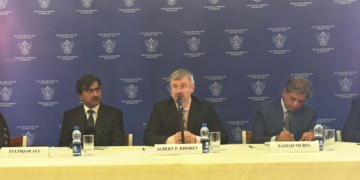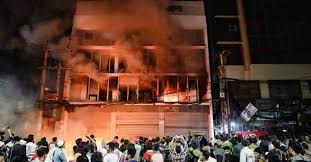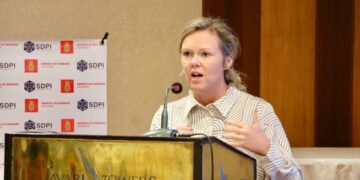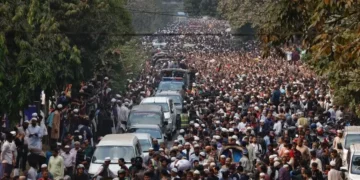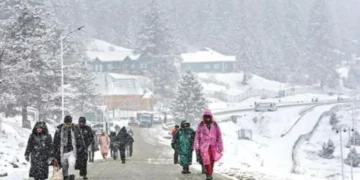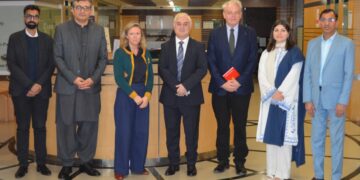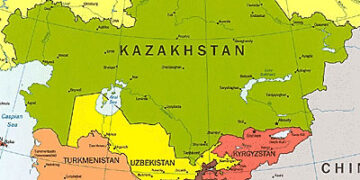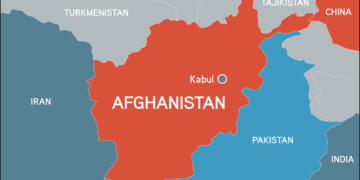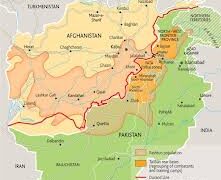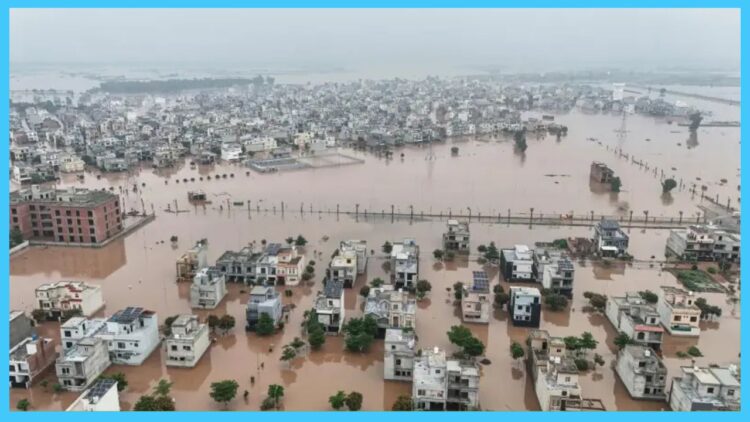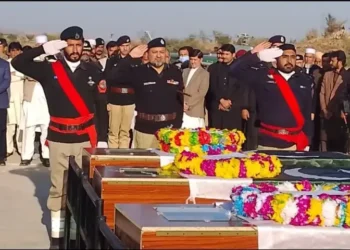Web Desk; Rivers in Punjab continue to remain in dangerously high flood levels, with authorities warning that the situation is likely to persist over the coming days. The Ravi at Balloki and the Sutlej at Ganda Singh Wala are currently experiencing what officials describe as “exceptionally high” floods, causing widespread devastation across multiple districts.
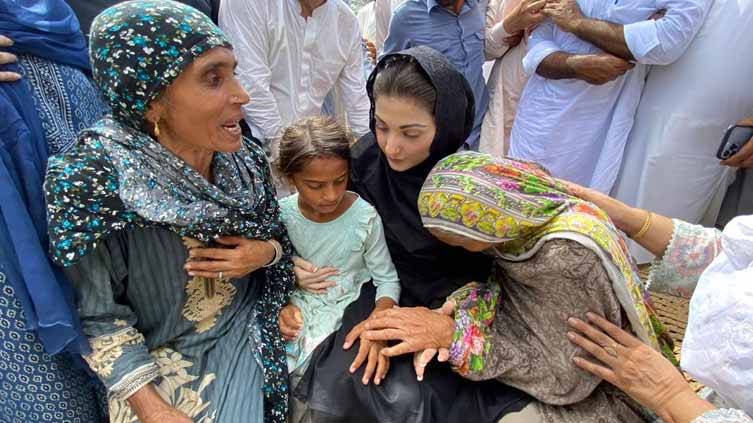
According to the Punjab Provincial Disaster Management Authority (PDMA), at least 30 people have lost their lives so far due to the floods. Officials further warned that exceptionally high water levels in the Sutlej, Ravi, and Chenab rivers are expected to continue until at least September 3. Heavy to very heavy rainfall in the upper catchment areas of India is compounding the crisis, with inflows surging across river systems.
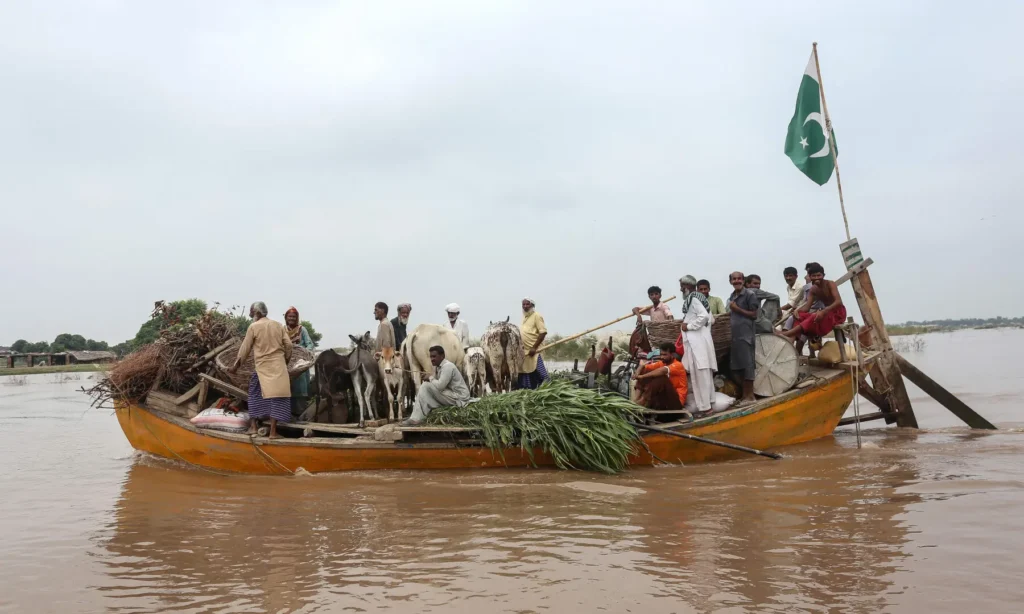
Evacuations and Controlled Breaches
Punjab Chief Minister Maryam Nawaz Sharif confirmed that more than 600,000 people and nearly 450,000 animals have been evacuated from flood-hit areas in what she described as the largest rescue and evacuation operation in the province’s history. “We are facing a disaster unlike any seen in decades. Continuous rainfall, coupled with the opening of spillways across the border, has forced our rivers to overflow,” she said.
To protect urban centers, the Punjab government has initiated controlled breaches of key embankments. Areas such as Jhang, Muzaffargarh, Multan, and Okara remain under high alert, with district administrations directed to ensure airtight preparedness. CM Maryam instructed officials to use barges for evacuating large herds of cattle and ordered the use of modern technology, including thermal-imaging drones, to locate stranded residents.

In addition to evacuation, relief operations are being carried out with temporary tent villages, mobile medical teams, and food distribution points. Dewatering of flooded hospitals and critical infrastructure is being prioritized, with pumps and heavy machinery deployed. A notable achievement was the clearing of floodwaters at the Kartarpur Sahib site within 24 hours.
Federal and Provincial Response
Prime Minister Shehbaz Sharif, accompanied by federal ministers and the Chief of Army Staff, visited several flood-hit areas to oversee operations and assure affected communities of government support. The National Disaster Management Authority (NDMA) emphasized that while rescue and relief remain the immediate focus, damage assessments will follow once floodwaters recede. Idrees Mahsud of the NDMA noted that preventing waterborne diseases is a top priority. He recalled lessons from the 2010 floods when global agencies had warned of secondary waves of deaths due to epidemics.
The Punjab government’s information minister, Azma Bokhari, said that long-term planning is underway, including forestation projects and proposals for new small dams. “This is the largest flood in our history, and we must learn from it,” she remarked, warning that future monsoon seasons could be even more severe due to climate change.
Impact in Sindh and Khyber Pakhtunkhwa
In Sindh, authorities are bracing for floodwaters from Punjab, expected to arrive between September 2 and 3. Provincial Information Minister Sharjeel Inam Memon confirmed that a large tent city is being set up in Tando Muhammad Khan’s Maqboro Sharif area to provide shelter for displaced families. In Jamshoro, rising water levels in the Indus have already inundated 28 villages in Sehwan and Manjhand talukas. Deputy Commissioner Ghazanfar Ali Qadri has instructed residents of low-lying villages to relocate to relief camps, many of which have been established in local school buildings.
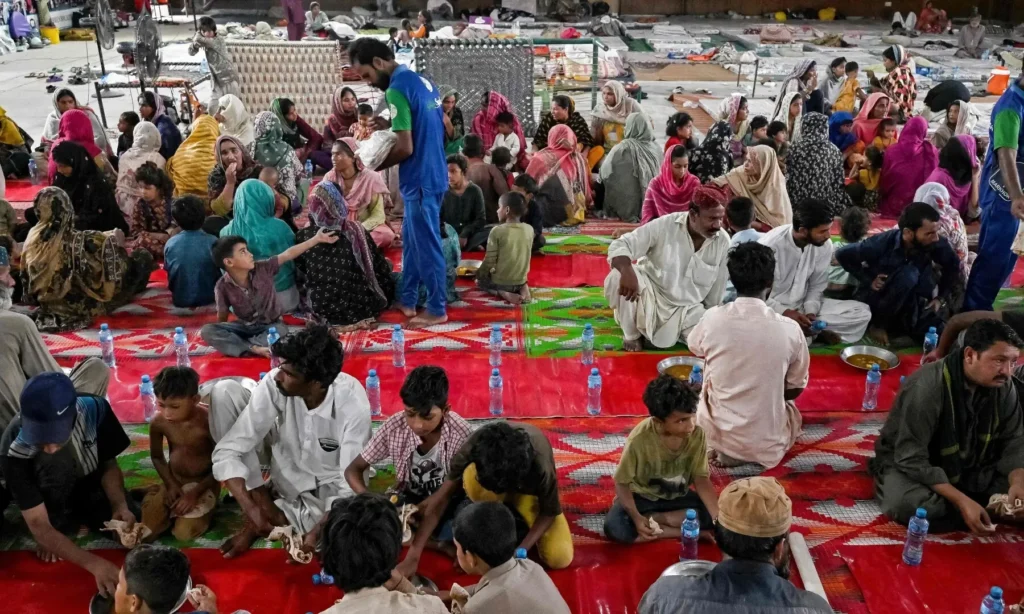
The Sindh Livestock Department has also established vaccination camps to protect cattle belonging to flood-affected families. In Naushahro Feroze, livestock vaccination campaigns are being conducted along embankments to prevent disease outbreaks.
Meanwhile, in Khyber Pakhtunkhwa (KP), heavy rainfall led to urban flooding in Peshawar and surrounding areas. Rescue 1122 relocated over 250 residents to safer locations, while 50 dewatering pumps were deployed to clear submerged neighborhoods. Provincial Disaster Management Authority (PDMA) chief Asfandyar Khattak visited the affected areas to supervise rescue and drainage operations.
District-Level Efforts
Across Punjab, district administrations are on high alert. In Toba Tek Singh, 52 villages in Kamalia and Pir Mahal tehsils were inundated by Ravi River floodwaters, affecting over 80,000 residents. Officials reported that more than 66,000 people were successfully evacuated, with civil defence forces, police, army, and local volunteers playing key roles. Around 53,000 livestock were also relocated to safer grounds. Relief camps continue to host displaced families, where food, water, and livestock fodder are being distributed.
Authorities in Sehwan, Toba Tek Singh, and several other flood-hit areas stressed that protecting human lives remains the top priority. Health teams are providing medical treatment and vaccinations, while “Clinics on Wheels” are being dispatched to rural zones.
Challenges and Long-Term Lessons
Despite massive rescue and relief operations, officials admit the scale of the disaster has stretched resources. CM Maryam Nawaz urged her administration to go beyond “basic governance,” emphasizing the importance of technology-driven operations, mobile sanitation facilities, and ensuring women and men are given separate safe spaces in relief shelters.
The NDMA and PDMA are working closely to prevent post-flood health crises, while federal and provincial leaders have pledged that long-term rehabilitation, rebuilding, and climate resilience measures will follow.
For now, with water levels still dangerously high in Punjab’s major rivers and the Indus swelling downstream, the focus remains on saving lives, evacuating at-risk populations, and mitigating further damage.



















